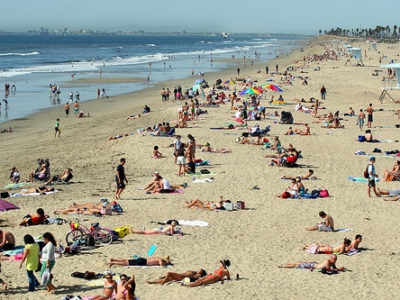As a typical 19-year-old, Samantha Hessel, a senior special education major with a minor in Spanish at University of Wisconsin OshKosh, lived her life in a carefree manner. She hit the tanning beds before prom and laid out in the sun during summer. However, at a young age, Hessel heard three words that have changed her life—“you have cancer.”
“I thought skin cancer was for old people,” said the melanoma survivor.
Most college-age students know that too much exposure from ultraviolet (UV) rays can cause skin cancer, but the need to be tan often outweighs that knowledge. Hessel says she understands the pressure within society to be tan, but recommends not doing so because of the dangers. “[Students] do not want to be in the place I was, being told I had cancer at such a young age.”
More than 2 million skin cancers are diagnosed each year in the United States. According to dermatologist Dr. Paul Cohen, who is a part of the David Cornfield Melanoma Fund that raises awareness of the disease, the deadliest type of skin cancer is melanoma.
With a minor surgery in 2009, Hessel had a mole removed along with 1 cm of surrounding skin. Now, as a 21-year-old University of Wisconsin Oshkosh student, “I am constantly worried about being in the sun and the cancer returning,” Hessel said. “I have to make sure I have sunscreen or sun protective clothing on before I leave the house.”
According to Dr. Cohen, many people feel the need to be tan because they want the “healthy glow” tanning provides. But, in order to protect one’s skin, he recommends applying a shot glass amount of lotion with at least SPF 30 every couple of hours. This goes for people with darker skin tones as well. Avoiding the sun during midday, which Cohen states as being between the hours of 10 a.m. and 4 p.m., is something students can do to lessen the damage done to skin.
Bylleigh Pirt of Westmoreland County Community College of Waynesburg, Pennsylvania says that knowing the dangers of tanning did not effect her decision in obtaining that coveted glow.
“I know tanning is bad,” Pirt said. “But I only did it for prom.”
The 18-year-old, now out of high school, tanned for an entire month using Banana Boat tanning lotion with SPF 8. She says she probably will not be tanning now that school is over.
Though Pirt’s lotion and many like it claim to have SPF, tanning lotions do not offer protection from UV rays. Unlike sunscreen, which is meant to provide safety for your skin, browning oil speeds up the tanning process by producing and bringing melanin (the pigment that gives skin and hair its color) to the top layer of your skin. Using a tanning lotion with a sun protection factor would cut your application time in half.
The only true method to keeping your skin safe is using sun block. You’ll have to do a little math to figure out exactly how the sun protection factor (SPF) works, but it’s nothing a fifth grader can’t do. The number alongside SPF does not indicate how strong the sunscreen is, but rather the amount of time one will be protected from the sun before getting sunburn. For instance, say you begin to turn red in 15 minutes and you’re using sunscreen with a SPF of 30; multiply the time it takes before you burn by the SPF number. In this case, you will be protected for 450-minutes.
Checking your skin once a month for new moles, which may differ in size, shape and color, may improve your chances of catching melanoma in its early stages. Always remember to wear sun protective clothing when sunscreen is not accessible, such as hats and jeans, and always apply lotion to your skin, even when you are trying to obtain that summer glow.
If you see a new or suspicious mole contact your dermatologist immediately. The earlier you catch melanoma the better chance there is to end it.



















